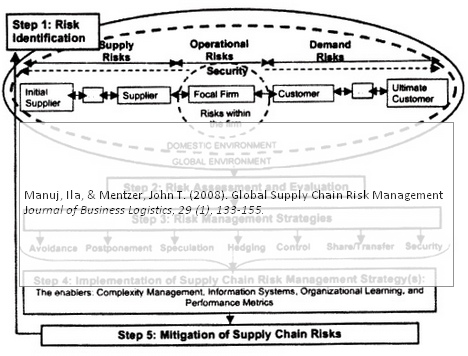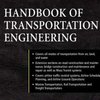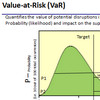 Finally it appears that someone has developed an easy, hands-on, not-so-academic and straightforward approach to global supply chain risk management: Global Supply Chain Risk Management by Ila Manuj and John T Mentzer. When I say finally, it is because it is not often that I come across papers that have fully grasped the concept of supply chain risk management and made it look so easy at the same time. In their very recent paper they develop a global supply chain framework and a five-step approach for global supply chain risk management and mitigation.
Finally it appears that someone has developed an easy, hands-on, not-so-academic and straightforward approach to global supply chain risk management: Global Supply Chain Risk Management by Ila Manuj and John T Mentzer. When I say finally, it is because it is not often that I come across papers that have fully grasped the concept of supply chain risk management and made it look so easy at the same time. In their very recent paper they develop a global supply chain framework and a five-step approach for global supply chain risk management and mitigation.
Postscript: As I later discovered, there are in fact two separate articles, by the same authors, Ila Manuj and John T. Mentzer, with almost the same title, published the same year, 2008, in two different journals. Click here for Global Supply Chain Risk Management Strategies by Manuj and Mentzer.
The model
I enjoy papers that are able to convey how a model turns into a methodology. This paper does that to the full. What’s more, their approach is easy to follow and leaves practically no stone (i.e. “risk”) unturned. Particularly noteworthy is how the model extends from micro level within the focal firm to macro environment of the supply chain.

In the model, they look at risks within the supply chain itself, namely supply risks, demand risks and operational risks, from the focal firm, through the domestic environment to the global environment.
The five steps
The five steps of global supply chain risk management follow in the footsteps of the classic circular risk analysis paradigm: Identify > Assess and Evaluate > Mitigate > Monitor and Re-assess. In their world they call it:
- Risk Identification
- Risk Assessment and Evaluation
- Selection of Risk Management Strategies
- Implementation of Risk Management Strategies
- Mitigation of Supply Chain Risks
Each step is explained using examples, including and tables that can be put to immediate use by anyone seeking to assess the risk in one’s own supply chain.
Types of Risks
In defining types of risk, Manuj and Mentzer, among other sources, apply Svensson (2000), where risks are qualitative/quantitative classification and atomistic/holistic risks, which I have discussed in a previous post. In addition, they use Goshal (1987), which I will come back to in a future post. Manuj and Mentzer settle for the following list of risks:
- Supply Risks – disruption of supply, inventory and schedules
- Operational Risks – breakdown of operations, changes in technology
- Demand Risks – variations in demand
- Security Risks – theft, sabotage, terrorism, counterfeiting, infrastructure breakdown
- Macro Risks – economic shifts, recession, hike in wages, variation in exchange rates
- Policy Risks – actions and sanctions of governments, shifts in legislation
- Competitive Risks – uncertainty about competitors’ moves and actions
- Resource Risks – uncertainty about resource availability
The first four are directly associated with the supply chain, while the latter four are environmental risks.
Risk Management Strategies
In developing risk management strategies, Manuj and Mentzer follow along the lines of Jütner, Peck and Christopher (2003), which I also will come back to later, who divide the strategies into seven categories:
- Avoidance – exiting a market (or product) or delay entering a market (or product)
- Postponement – delay commitment of resources to maintain utmost flexibility
- Speculation – assuming risk to gain competitive advantage
- Hedging – globally dispersing your portfolio of suppliers, customers and facilities
- Control – vertical and lateral integration of suppliers and business partners
- Transferring/sharing risk – outsourcing, offshoring, contracting
- Security – identifying unusual movements and protecting against unwanted penetration
In selecting the appropriate strategy, managers should consider both market risk and business risk, seeking to balance both.
Conclusion
This is an excellent paper, providing a clearly outlined, academically sound approach with a high practical value. Backed by the literature, it provides an understanding of the constituents of risk, how to create a risk profile, and how to use the risk profile to generate a set of appropriate strategies in the context of global supply chains and corporate strategies. The framework considers both quantitative and qualitative risk, and it explicitly recognizes the dynamic environment in which global supply chains operate.
Reference
Manuj, Ila, & Mentzer, John T. (2008). Global Supply Chain Risk Management Journal of Business Logistics, 29 (1), 133-155.
Author links
- wikipedia.org: John T Mentzer
- researchgate.net: Ila Manuj
Related
Manuj, I. and Mentzer, J.T. (2008) Global Supply Chain Risk Management Strategies. International Journal of Physical Distribution and Logistics Management, Vol. 38, No. 3, pp. 192-223.











